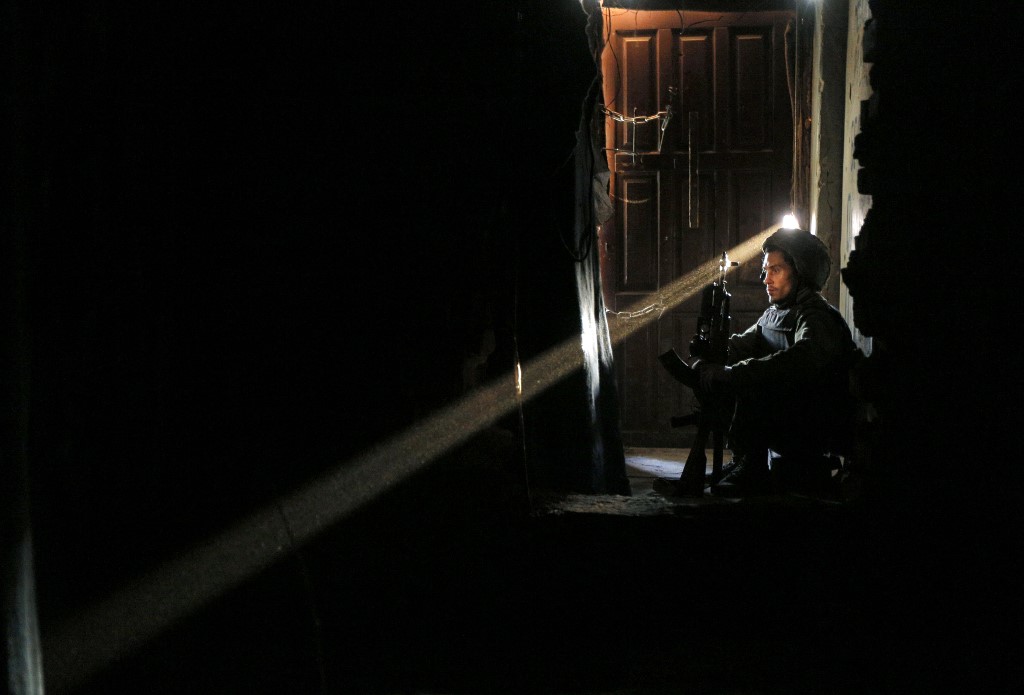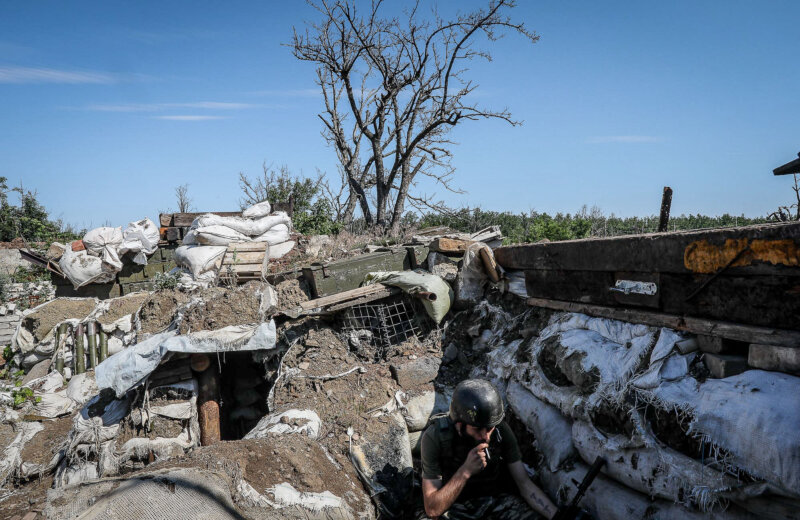Yet another attempt to impose a “comprehensive armistice” in the war zone of Donbas has failed less than an hour after coming into force at midnight on July 27, as sporadic armed clashes between Ukrainian forces and Russian-backed militants continued overnight.
According to a communique by Ukraine’s military-police contingent in Donbas, the Joint Forces, at least two armed attacks against Ukrainian troops occurred in the early morning hours.
“Unfortunately, the enemy fired upon the 36th Marine Brigade units (deployed northeast of the stronghold city of Mariupol) with firearms, man-portable anti-tank weapons and heavy-caliber machine guns between 12:20 and 12:45 a.m. (local time),” the Joint Forces’ top commanding officer, Lieutenant General Volodymyr Kravchenko, said during a press briefing on July 27.
According to the message, the Ukrainians abstained from returning fire. Ukrainian forces sustained no casualties.
The general added that Ukraine’s 79th Airborne Brigade formations, deployed near the village of Novomykhailivka, just west of the occupied city of Donetsk, reported another attack in which the enemy fired three anti-tank projectiles at the Ukrainian lines and planted three POM-2 landmines.

A Ukrainian soldier is seen at a position on the front line with Russia-backed militants in an industrial zone near the town of Avdiyivka in eastern Ukraine on Nov. 28, 2019. (AFP)
The envoys of Ukraine, Russia and the Organization for Security and Cooperation in Europe (OSCE) agreed upon the latest armistice declaration on July 22 in Minsk. The agreement envisaged a wide range of restrictions placed upon both warring parties, such as a total ban on subversive actions and reconnaissance activities, the use of aerial vehicles including drones, firearms including sniper weapons, and the deployment of heavy weapons in close proximity to civilian objects.
Furthermore, the provisions urged both sides to take disciplinary actions against troops violating the ceasefire. All violations would also have to be addressed through the mediation of the Joint Coordination and Control Center (JCCC), the cross-frontline liaison body.
According to the agreement, troops cannot return fire at the enemy unless it is approved by their top commanders after attempts to address the escalation through the JCCC have failed.
Dismal history
The latest ceasefire declaration joins a list of over 20 failed attempts to halt hostilities in the Donbas since Russia invaded the region in 2014. Many of the previous agreements also envisaged a strict ban on engaging the enemy and visits by OSCE inspectors to ensure no one had fired.
But the latest declaration proved controversial in Ukraine due to restrictions on soldiers returning fire. Critics accusing President Volodymyr Zelensky of advocating for a humiliating ceasefire that put Ukraine at a disadvantage and appeased the Kremlin.
Nonetheless, Ukraine’s military command vowed that Ukrainian forces defending the 420-kilometer front line in Donbas would not leave militant attacks unanswered.
“No one can prevent troops from defending themselves and their brothers in arms in case of overt armed aggression,” Donbas top general Kravchenko said early on July 27.
“As a Joint Forces commander, whose foremost task is to protect the lives of military personnel and the civilian population in the Joint Forces operational zone, I reassure you that, should the enemy violate the state of ceasefire and put (our troops’) lives in danger, the response from the Armed Forces of Ukraine will be swift and resolute.”
“I want to make it clear that, while we truly seek peace, our aspiration should not… be perceived as weakness.”

A Ukrainian soldier at his position on the front line with Russia-backed militants near Avdiyivka, Donetsk Oblast on July 19, 2019. (AFP)
Earlier, on July 26, the top commander of Ukraine’s Armed Forces, Lieutenant General Ruslan Khomchak, also said that Ukrainian troops were entitled to and would return fire against militant attacks in compliance with the United Nations Charter’s Article 51, which enshrines the right of combatants to self-defense in war.
He added that Ukraine’s forces were fully prepared for the new ceasefire, having deployed additional reserves for stronger front line defense.
Phone call
On July 26, Russian media reported that all militant formations in the Donbas had been ordered to observe the “full ceasefire,” with each and every militant reportedly obliged to personally sign onto the provisions. Later in the day, the occupation authorities in Donbas asserted that all militant formations were ready to hold their fire starting from midnight.
Hours before the ceasefire entered into force, Zelensky had a phone conversation with Russian President Vladimir Putin. According to official reports, the leaders agreed on “the immediate implementation of additional measures for a sustainable armistice in Donbas.”
However, as early as July 27, Kremlin spokesman Dmitry Peskov asserted during a press conference that Russia could not ensure a sustainable ceasefire fully observed by the militants.
“Russia can not act as a guarantor of the armistice in the Donbas since it is not a side in the given conflict,” Peskov said, according to the Kremlin website.
Over 13,000 people, including nearly 4,000 Ukrainian soldiers, have been killed in hostilities in the Donbas since the outbreak of war in spring 2014.
Despite abundant evidence to the contrary, Russia continues to deny that it actively supports the 40,000-strong militant force in the region or that Russian regularly troops have directly engaged in the conflict.



